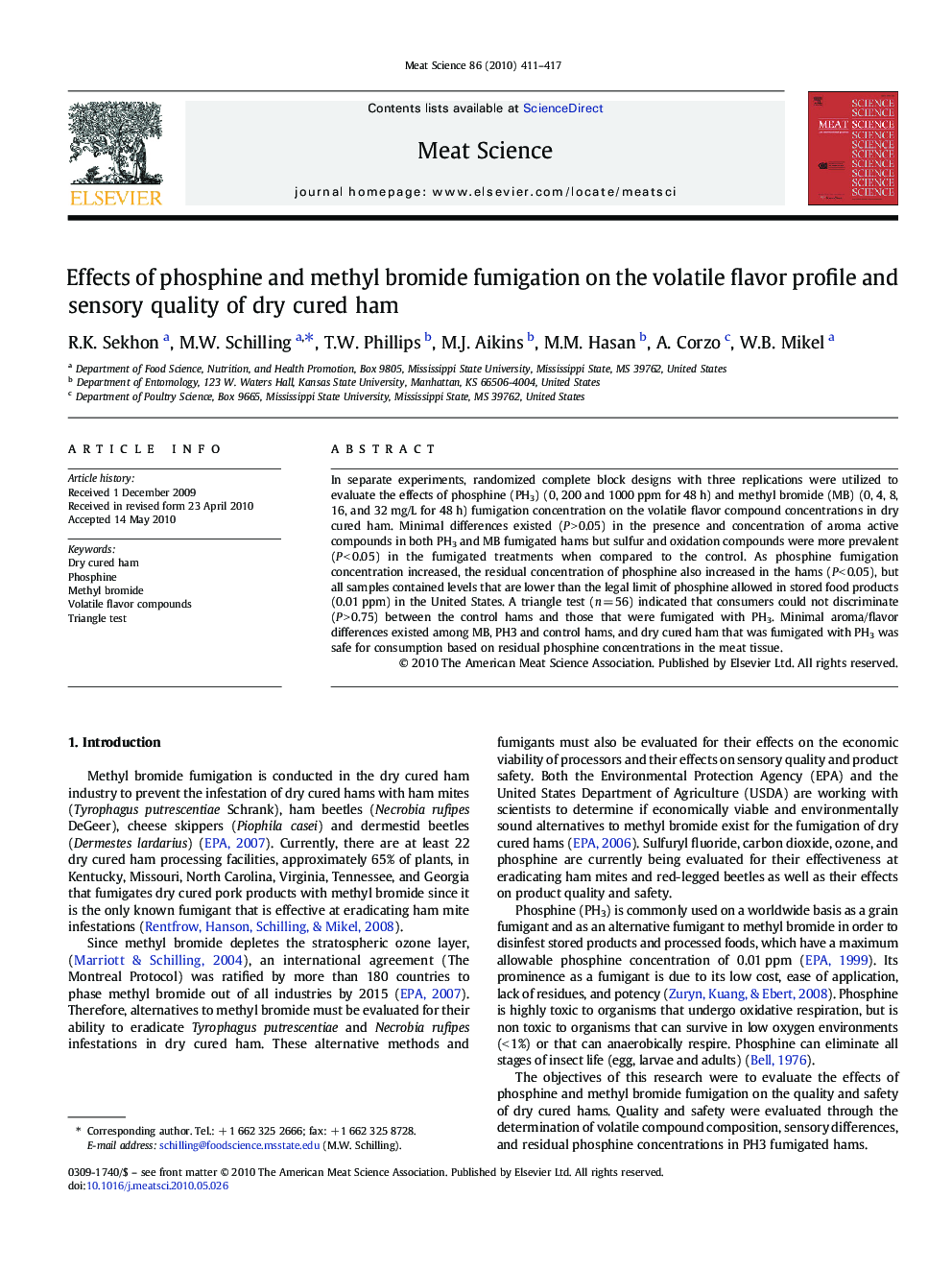| Article ID | Journal | Published Year | Pages | File Type |
|---|---|---|---|---|
| 2450295 | Meat Science | 2010 | 7 Pages |
In separate experiments, randomized complete block designs with three replications were utilized to evaluate the effects of phosphine (PH3) (0, 200 and 1000 ppm for 48 h) and methyl bromide (MB) (0, 4, 8, 16, and 32 mg/L for 48 h) fumigation concentration on the volatile flavor compound concentrations in dry cured ham. Minimal differences existed (P > 0.05) in the presence and concentration of aroma active compounds in both PH3 and MB fumigated hams but sulfur and oxidation compounds were more prevalent (P < 0.05) in the fumigated treatments when compared to the control. As phosphine fumigation concentration increased, the residual concentration of phosphine also increased in the hams (P < 0.05), but all samples contained levels that are lower than the legal limit of phosphine allowed in stored food products (0.01 ppm) in the United States. A triangle test (n = 56) indicated that consumers could not discriminate (P > 0.75) between the control hams and those that were fumigated with PH3. Minimal aroma/flavor differences existed among MB, PH3 and control hams, and dry cured ham that was fumigated with PH3 was safe for consumption based on residual phosphine concentrations in the meat tissue.
